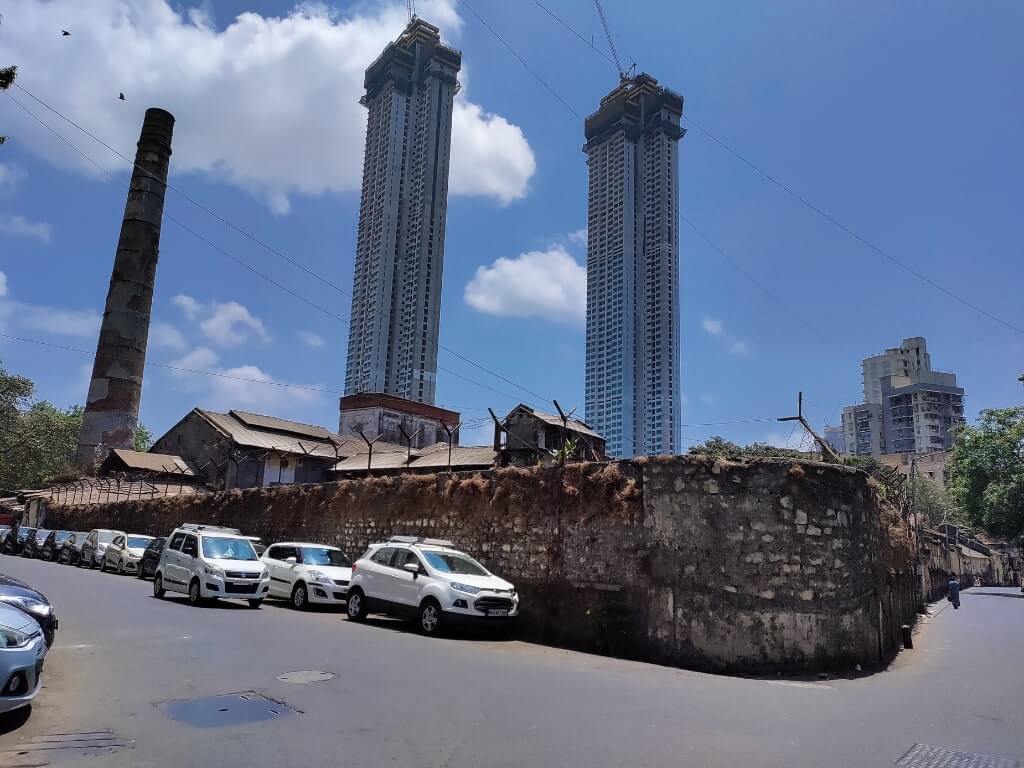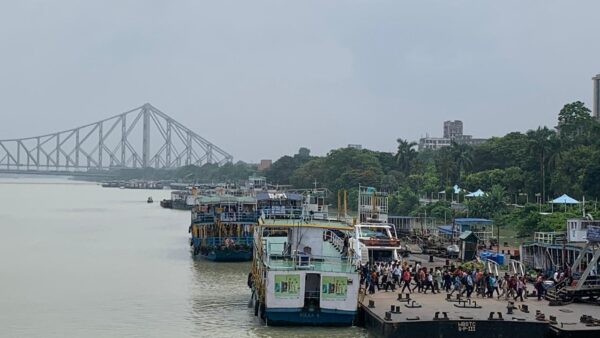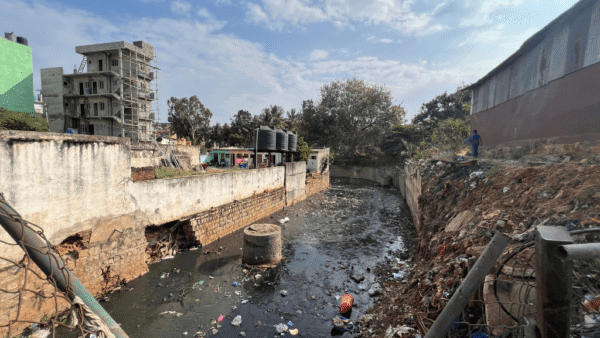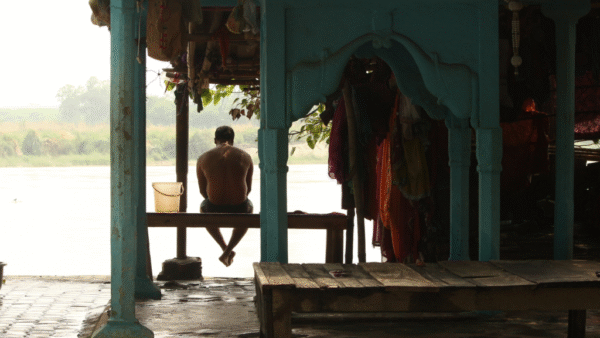Pradip Patil, 65, worked in Elphinstone Mill in Mumbai (then Bombay) for 17 years till the strike in 1982 brought the work to a halt. It took 30 more years of struggle and waiting before he got a house in New Hind MHADA Sankul in Mazgaon where he has been living with his wife and children since 2013. Patil’s father and brother too worked in the same mill, but only Patil was allotted a house.
After the mill shut down, Patil shifted to his village Nerle in Sangli district for a few years and took up farming to make ends meet. However, he soon came back to Mumbai. “I returned as I wanted my children to be educated and we could hardly sustain on farming. I started selling vegetables and fruits. My wife works as a cook in the nearby houses. This has helped me stay connected to the city,” says Patil.
The mill workers’ strike led by trade union leader Datta Samant led to lakhs of mill workers losing their jobs and many mills shutting down as Mumbai’s economy transformed from manufacturing to the service sector and mill plots in the heart of the city became valuable. The strike started as a protest to demand a bonus and wage hike, but the struggle later turned into the worker’s demand for housing. Governments were sworn in and stepped down, of various political ideologies. They offered sympathy and an ear to the workers but dragged on their demand to make houses a reality.
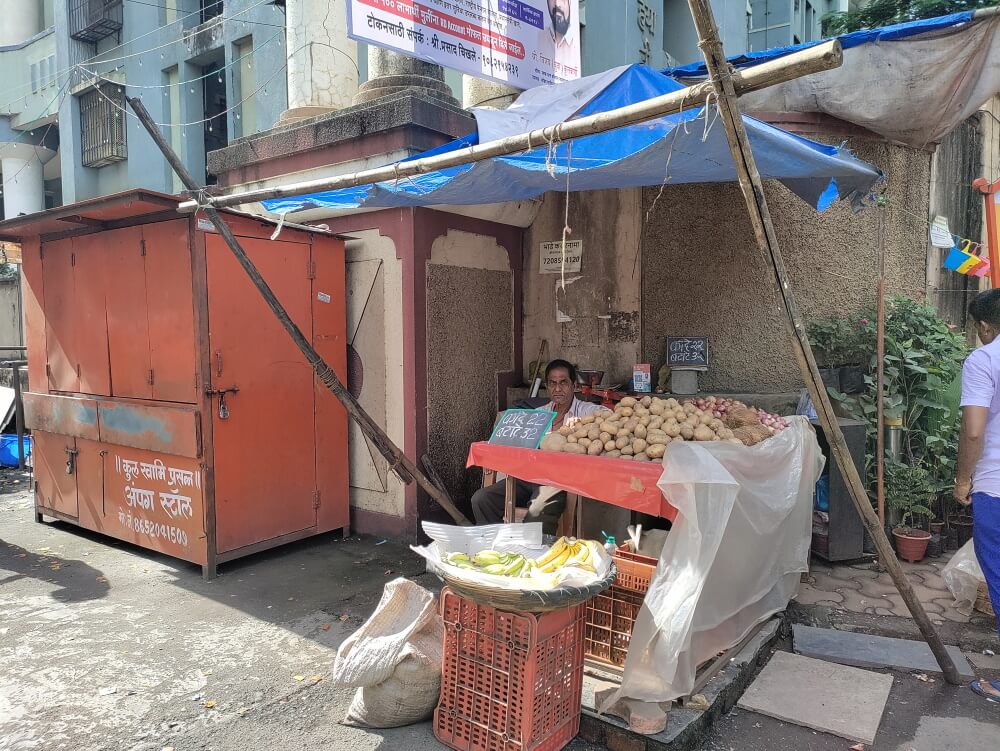
Photo: Dnyaneshwari Burghate
Over these decades, only 18,000 of the nearly two lakh mill workers have been allotted houses. Central Mumbai, which was dotted with mills whose area covered nearly 600 acres, though not contiguous, now has luxury residential towers and coveted commercial high-rises – but seemingly has no land and no mechanism to provide homes en masse for mill workers. They have to keep waiting and fighting for years – for crumbs.
Among the lakhs still waiting to get a house is Anant Dalvi, 63, a retired employee of Hindustan Lever. His father, Krishna, worked in New Hind Kesar Textile Mill in Mazgaon for 25 years. His father has passed away and Anant’s name is on the waiting list of Maharashtra Housing and Area Development Authority (MHADA). “My father supported the strike for around two years. We had nothing to eat. Our only source of income was my father’s salary, so he worked for another 10 to 12 years till the time the workers were asked to take voluntary retirement,” says Dalvi who lives with his family in an Irani chawl in Byculla. “I do not have any hope to get the house after union leader Datta Iswalkar’s demise.”
Iswalkar, whose life’s work is synonymous with the workers’ struggle for housing, passed away last year. He often mentioned, caustically, that for aging former mill workers, a house on or near mill land is their life’s earning. He once remarked to former professor and author Vivek Patwardhan in a video: “Mumbai sheher mein maine kya kamaya? Maine apne bete ke liye ek bade tower mein ghar banaya, yehi meri kamayi hain” (What have I achieved in Mumbai? I have built a house in a big building for my son, that is my achievement).
Life in cramped spaces
The mill workers comprising Kolis, Bhandaris, Kunbis from Maharashtra played an important role in the development of the city, shaping it into a vibrant and buzzing metropolis. They were housed in chawls on the mill premises or nearby, often constructed by mill owners. The chawls, with their small one or two-room tenements joined by a long corridor on the outside and common washrooms, hardly offered ideal living conditions for workers and their families, but it meant a roof over the head for the migrants, that too in the heart of the city and near the workplace.
The chawl life has been romanticised in literature, cinema and poetry but it had an underside too. Their squalid living condition was written by veteran journalist and author Darryl D’Monte in Mills for Sale: The Way Ahead in which he remarked that “…it (chawl) being a dark den that “breeds disease and pestilence.”
Ten workers lived in a small room in chawls as they worked different shifts. The mill owners housed the mill workers in chawls near the mills with “dingy one-room tenements without light or air”, writes Shanta Gokhale in Shivaji Park: Dadar 28: History, Places, People.
Mumbai’s initial cultural life revolved around the mill workers — be it Ganeshotsav, sporting activities, music, theatre, and films. Describing the mill workers’ space and culture, Gokhale writes in the same book, “The mill workers gave birth to a vibrant culture of music and drama, acquiring fearless political voices which writers like Annabhau Sathe, Baburao Bagul, Shankarrao Kharat and Narayan Surve used forcefully in their poetry and fiction.”
Later, many joined in to highlight the issue in their own way. The mill workers’ struggle inspired playwright Ramu Ramanathan to write the play Cotton 56 Polyester 84, directed by Sunil Shanbag. It is about two mill workers who while away their time at the local reading room and count passers-by to see how many are wearing cotton clothes or polyester. “I remember audience members telling me how some shows extended by an extra hour or so because of the response to the politics of the play or the mill workers singing along to the lok shahiri in the play. It reminded them of their glory days,” says Ramanathan.
Shanbag says, “The play was not designed to be a part of the mill workers’ struggle but in its representation of their lives, and the struggle…it evoked different things for different audiences. In our regular shows at formal venues, it seemed to reveal an aspect of Mumbai’s history that has remained mostly invisible.”
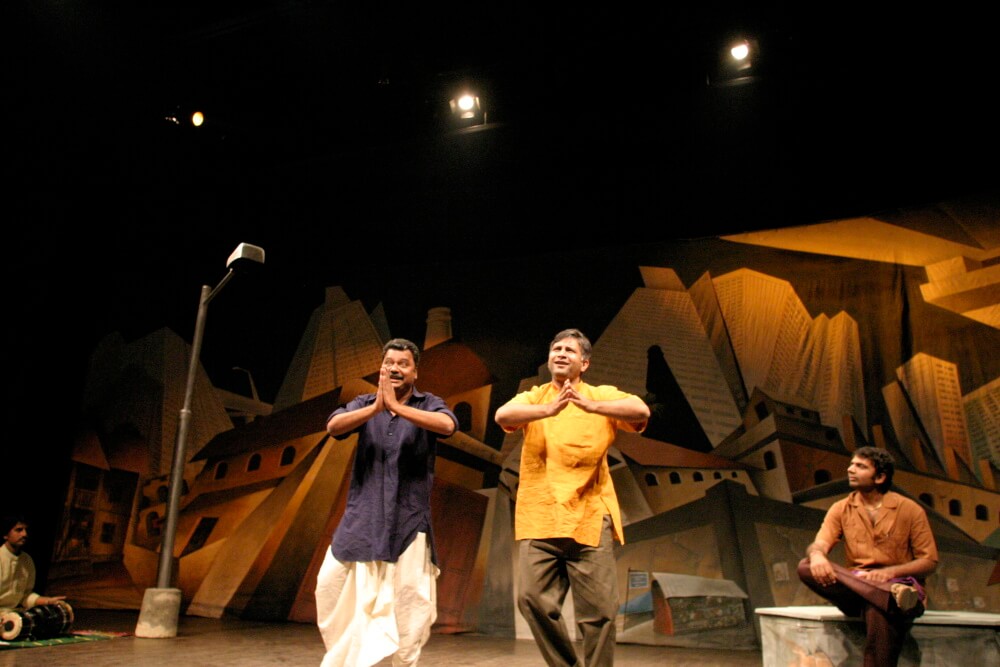
Photo: Sunil Shanbag
The initial struggle
The Mill Hands Association, the first workers’ association in India, was set up in 1884. It was successful in guaranteeing weekly holidays to mill workers, reducing working hours to 10 hours a day, and imposing a ban on child labour. The mill workers went on a six-day strike when Lokmanya Tilak was arrested in 1908. The mill workers also participated actively in the formation of the Maharashtra state in 1960 — out of 105 martyrs, 22 were mill workers.
Despite their long association with the city and their area called Girangaon, or village of the mills, the workers had to go out on a limb before the state government agreed to their demand to be re-housed in the area or on the mill land itself. Only in 2011, Prithviraj Chavan, the then chief minister of Maharashtra, promised houses in Mumbai to all the 1,75,000 mill workers who had applied.
On June 28, 2012, the government and MHADA conducted the first lottery to allot 6,948 houses. This allotment had come after nearly 20 years of struggle by mill workers and union leaders Datta Iswalkar, Pravin Ghag, and Gayatri Singh among others to etch out a tiny piece of the mill land. Later, lotteries were conducted in 2016 and 2020.
After decades of struggle, a total of 18,000 mill workers have been allotted houses so far. It’s a small fraction; many more thousands wait their turn. The irony is complete considering that former mill plots in central Mumbai have been turned into upscale residential addresses with luxury apartments or swanky commercial towers. However, the government and MHADA together have not figured out a way to house all the workers in affordable homes yet.
The housing complexes for workers have been built on parts of the closed textile mills in the Mazgaon, Lower Parel, Prabhadevi, and Sewri regions of Central Mumbai by MHADA, and in Panvel by Mumbai Metropolitan Region Development Authority (MMRDA). Each person who has an allotment gets 225 square feet house which costs Rs7.5 lakh – this is cheaper than other houses but still unaffordable for mill workers. “The houses in Panvel are bigger and cheaper, costing Rs 6.5 lakh,” said Dalvi.
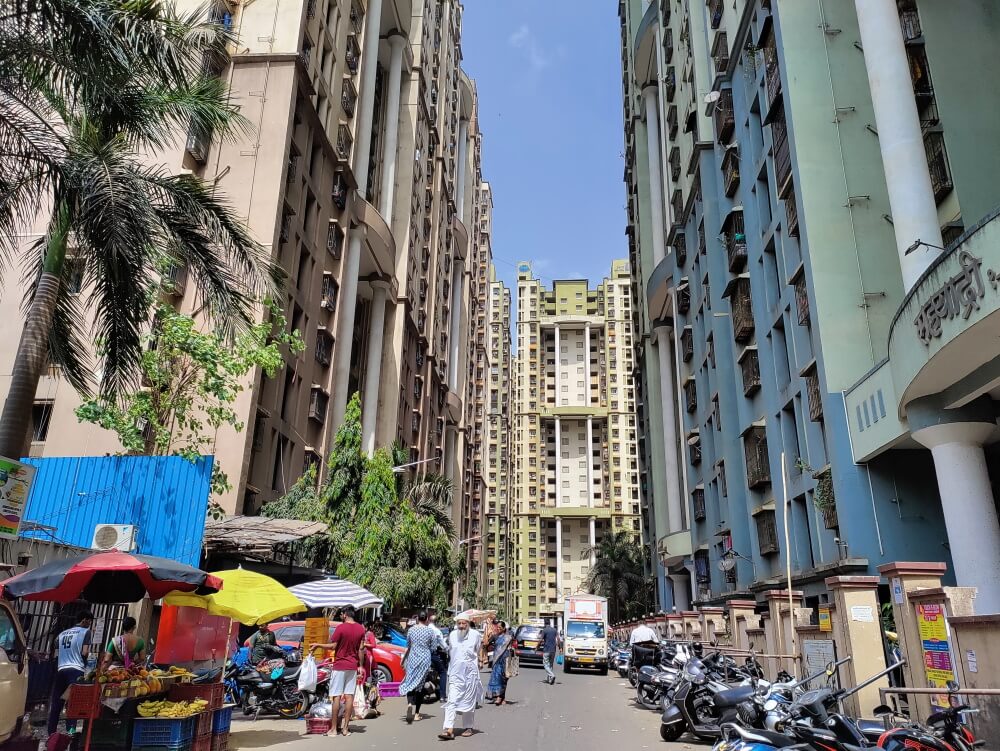
Photo: Dnyaneshwari Burghate
Mill crisis in times of modernisation
The mills began to fall on bad times around the 1980s. The market was changing, the technology was changing, and the situation worsened when the Datta Samant-led strike meant that mills would not run. The mill owners used the strike as an excuse to shut down the mills. The trade unionists focused only on wages and related issues, and the government failed to formulate and implement policies aligning with the workers’ demands. Thus, the textile industry, which started with huge potential and was self-sufficient in raw materials, labour, and market, sank into a permanent and irrevocable crisis.
Ideally, the land that was leased to owners for the purpose of textile mills should have been claimed back by the government or municipal corporation. The same period witnessed a boom in the real estate business across Mumbai, and the large mill plots in the heart of the city meant lucrative deals for owners. On October 2, 1989, a group of workers from 10 mills which had shut down after the strike, came together in Nare Park. Datta Iswalkar, Bal Nar, Pravin Ghag were active members with different political ideologies from different unions. The meeting resulted in the formation of Bandh Girni Kamgar Sangharsh Samiti (BGKSS) which promised that the workers would get their jobs back or get compensated with their dues.
New regulations drafted after protests intensify
Their first major activity happened in 1990 when Iswalkar, Ghag and three workers from New Great Eastern Mill began a fast-unto-death protest outside the mill gates. Political parties, unions, and even Datta Samant supported this action. The BGKSS then decided to ‘take over’ the New Great Eastern Mill by climbing the 20-foot-high wall of the mill at night. This received great media attention and forced the state government to take a drastic decision about the mill land.
The BGKSS became Girni Kamgar Sangharsh Samiti (GKSS) with Gayatri Singh as president and Iswalkar as secretary. The main demands of the Samiti still focused around the job losses and sale of the mill land. The then chief minister Sudhakarrao Naik introduced the Development Control Regulations (DCR) in 1991 to sell and redevelop the mill land, with conditions to modernise the mills and pay the workers’ dues.
The regulations allowed the sale of the mill land in what came to be called the one-third formula: one-third of the land was to be utilised by the municipal corporation to create open spaces, another one-third was to be developed by MHADA to create affordable housing, and last one-third could be commercially developed by mill owners. Through a sleight of hand, as it were, the one-third formula was made to apply not to the entire plot but only to the open space on it, thereby depriving the city of public place and affordable housing.
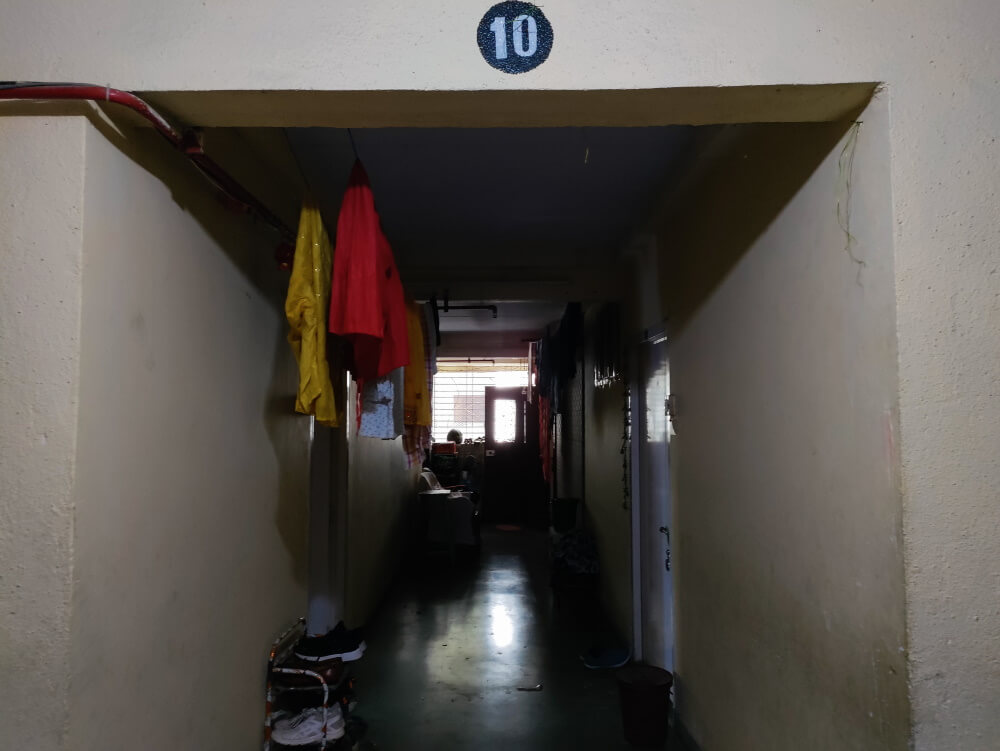
Photo: Dnyaneshwari Burghate
A significant win: Protection against eviction
The workers living in chawls on the mill land were evicted. As the mill owners continued to sell or redevelop the land, the mill workers demanded equal rights over the land. They built pressure on the government to not allow the sale of land, and if they do, they should get employment and housing in the redeveloped areas. The mill workers formed an association of over 6,000 families living in the chawls. “We sat on hunger strikes, and marched to the chief minister’s bungalows and Mantralaya,” said Meena Menon, researcher and activist who worked closely with the GKSS and actively participated in the demonstrations against the mill owners and government.
The agitations made the government amend the DCR in 2001, and give protection to those still in the chawls. Another victory for the workers was the allotment to MHADA to create the few affordable housing units for the workers.
“In every struggle, you have two choices; you either sink in because you are losing or you negotiate and get something out of it and we chose the latter. If the mills were not opening, we demanded a share of the mill land for the workers,” said Menon.
This sounded like a victory on the face of it, but the mill owners approached the state government and there was a “minor modification” in the law, as Menon and Neera Adarkar call it in One Hundred Years One Hundred Voices. The modification turned the one-third formula on its head. “Whatever we had achieved through our sagharsh (struggle) had been taken away in a moment. Out of the 200 acres of land given to MHADA, we were supposed to get 100 acres for housing but now we were left with around 27 acres,” says Pravin Ghag, president of GKSS.
Chavan formed a committee to identify places around Mumbai where houses could be built and areas around Panvel and New Mumbai were finalised, says Menon.
Who is occupying the mill lands and houses in Mumbai?
There are six to seven mills that are still “operational” with around 30 sewing machines and no real production, one of which is India United Mill No. 5. “If we get these mill land, we will have space to build more houses. We won’t have to shift to Panvel and remote areas in New Mumbai. But the government and mill owners hold things up deliberately because the DCR specifies that areas only around closed mills can be sold and redeveloped,” says Ghag.
According to a study[1] by Knight Frank India, 7,359 housing units are unsold and vacant in central Mumbai in 2021. But since these were not meant for mill workers, none were allotted to them. Neither did they get the promised jobs in the commercial buildings which came up on mill land.
The same property consultancy also reported[2] that “property registrations in Mumbai increased by 21 per cent in June 2022”. Out of them, 87 per cent are residential while 8 per cent are for commercial purposes. This means that the city which is often blamed for having little to no space does have houses that are being built and sold. But, clearly not for the mill workers. There are no grounds to deny them the houses for which they have struggled for years.
They are not giving up, though. “We have come so far. We can’t leave the battlefield now,” says Ghag.
Dnyaneshwari Burghate, a post-graduate in Women’s Studies with additional qualifications in media, is a researcher, photographer, and story-teller. She documents stories at the intersection of gender, media and society.
Cover photo: Dnyaneshwari Burghate

